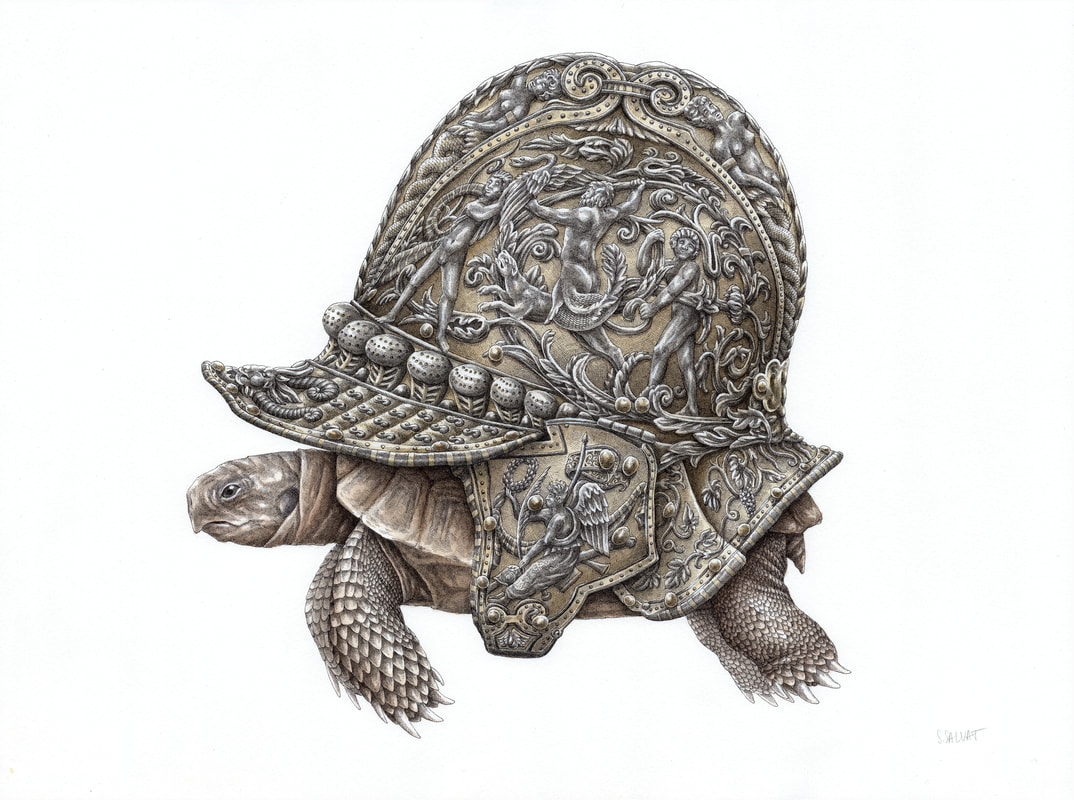|
THE CONCEPT OF AN ILLUSTRATION, COMES TO STEEVEN SALVAT FROM THINGS HE'S LEARNED, SEEN OR EXPERIENCED.
CARMEN HUST | ARTICULATE #22 | JAN 2020 The French artist Steeven Salvat (b. 1990) is self-taught and creates artworks with a hatching technique, using China ink, above all. Salvat’s drive is generated from his fascination for visual art, as a genre which is technically impressive to him. He’s drawing and painting since he was a child, and he always wanted to make a living with and from visual arts.
The black-and-white and old-school motives give expression and air of nostalgia. This could very well be due to Jolonch’s first experiences with art being painting old cassettes and posters as a child. Thus creating art came from a very young age.
Jolonch explain himself as an artist with a want for building alternative realities created from imagination. |
When working on big projects of illustrations related to one another, Steeven Salvat prepares everything mentally and to the detail before he actually starts working. He wants all the illustrations of a series to be equally powerful. He works with documentation and studies tons of images before heading into the final sketch.
The concept of an illustration, always comes to Salvat from things he’s learned, seen or experienced. He has a real passion for nature and animals, but also for history, arts and crafts. To Salvat, the key of constructing a good composition is to bring life to a subject with a contrast or unexpected association. By this, he means when a subject is interacting with another, in an unimaginable way. |
Steeven Salvat is influenced by the French artist, printmaker, illustrator, comics artist, caricaturist, and sculptor Gustave Doré (1832-1883), because of his master technique and his general influence on illustration as an art form. Furthermore, Salvat enjoys the colorful universe of the Taiwanese American visual artist James Jean (b. 1979).
This article about STEEVEN SALVAT takes part of ARTICULATE #22. Read, download or order your print version of the full publication below
|
SUPPORTARTICULATE
www.articulate.nu SUPPORT Monday - Friday 8:00 - 16:00 [email protected] +45 30 48 19 81 Head Quarters VAT DK40953191 |
|







